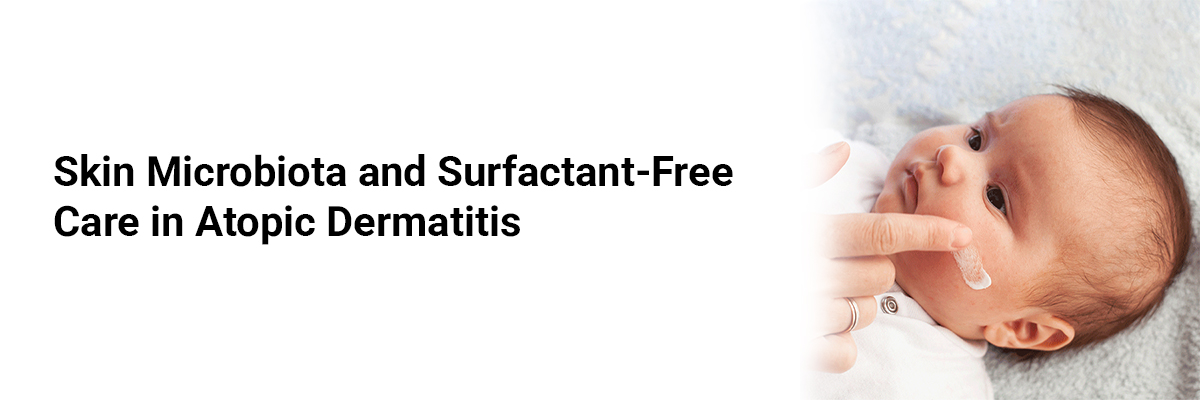
Skin Microbiota and Surfactant-Free Care in Atopic Dermatitis
Atopic dermatitis (AD) is currently understood to involve inflammation driven by Th2 and Th22 immune responses, as well as genetic factors such as filaggrin mutations and skin barrier dysfunction. Another idea is that AD primarily results from a faulty skin microbial community, with poor skin healing exacerbating the condition. AD causes symptoms like itchy, red, swollen, and cracked skin. Usual treatments include moisturizers, topical steroids, calcineurin inhibitors, and newer biologic drugs.
In Japan, moist wound healing methods that aid in natural skin regeneration have shown promising results. This led to the creation of new moisturizers that excluded harsh surfactants to help alleviate dry skin.
This perspective proposed a new cause (etiology) of atopic dermatitis (AD).
- Recommended limiting newborn bathing to three times per week.
- Suggested stopping the use of soap and shampoo for infants.
- Advised using bathing additives containing petroleum jelly to neutralize chlorine in tap water.
- Supported cognitive behavioral therapy to replace scratching with moisturizer application.
- Encouraged smoking cessation for both patients and family members.
- Recommended stress management to help reduce disease severity.
The study concluded that these measures aimed to improve AD management by targeting skincare and lifestyle factors, but further research was needed to confirm their effectiveness. It found early childhood was crucial for AD risk and recommended petroleum jelly-based bathing additives to reduce progression and support non-pharmacological treatments, though rigorous randomized, double-blind trials were required.
(Source: Clinical, Cosmetic and Investigational Dermatology, 18, 1087–1093. https://doi.org/10.2147/CCID.S532670)













Please login to comment on this article